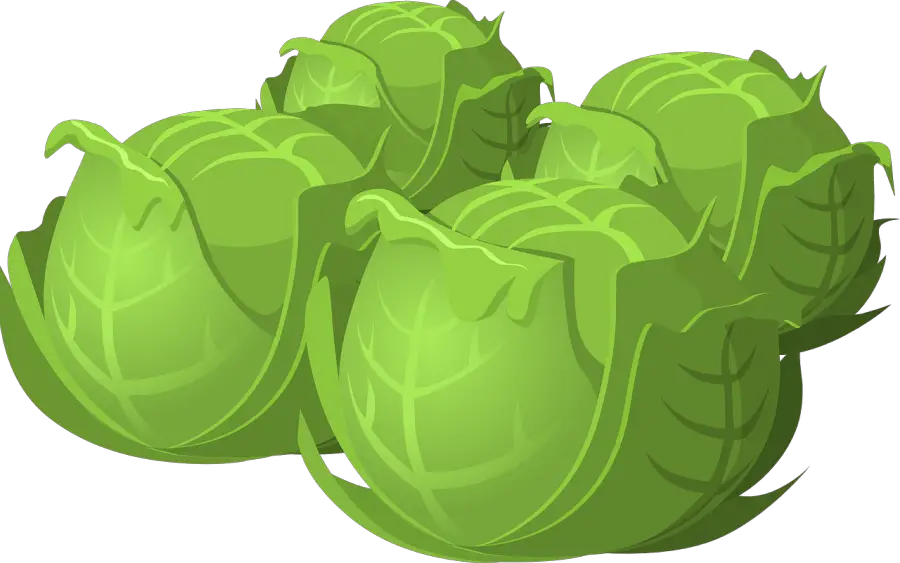The cabbage just might be the king of the vegetables given how adaptable, affordable, and versatile it is. Cabbages are the perfect way to spruce up countless recipes, with culinary experts all over finding new and exciting ways to prepare them.
You can most definitely eat the outer cabbage leaves. Not only can you eat them, but if you don’t you will be missing out on some of the most nutritious portions of the cabbage itself. These can be a bit more bitter and will need more thorough cleaning than other interior parts.
But just how much of the cabbage is edible? Do the outer leaves have any nutritional value? Are they even safe to eat? If so, how do you prepare them?
Let’s take a look, shall we?

Contents
Can Outer Cabbage Leaves Be Eaten?
The sight of leftover outer cabbage leaves is a common scene in grocery store vegetable aisles everywhere. Most people tend to prefer the inner cabbage core and may even prune off large and overly floppy outer leaves which are commonly regarded as waste.
It is perfectly acceptable to wash, cook, and eat cabbage leaves as long as proper preparation is done. They should be inspected for blemishes, dirt, and rot followed by a thorough washing. Then specific recipes should be followed to soften the leaves and alleviate bitterness.
Who can blame these people? After all outer cabbage leaves tend to be bruised, worn, and covered in a lot of dirt, which does little to boost their appeal. These are also handled directly by many people along the way.
They can develop lesions and rot due to abuse and need to be scrutinized before using.
However, what if we told you that by neglecting these leaves, you are actually doing yourself a disservice and wasting significant parts of your cabbage?
That’s right, it turns out that outer leaves are not as useless as they may appear to be. Outer cabbage leaves are indeed edible…and quite tasty if prepared correctly. The leaves are especially rich in vitamin K, although they also have vitamins A, B, and C. Cabbage leaves are also a good source of manganese, folate, and fiber.
However, you must avoid any darkened or wilted leaves as this is a sign of rot.
Here are some more articles you will like from LawncareGrandpa.com…
- Are There Male And Female Bananas? (Surprising Answer)
- What Is Eating My Strawberries? Let’s Find Out!
- How And Why To Compost Bones (Home Composting Tip)
Cleaning Cabbage Leaves Is Important
Like with the core itself, there are many ways to prepare the outer leaves and turn them into rich, hearty meals.
However, before you settle on a recipe, you must prepare the leaves properly. As we’ve already seen, the outer leaves go through a lot between their time in the field and when they are finally placed on a shelf to be bought.
Dirt
For starters, they can be carrying a lot of dirt. Since they are outside, they can easily pick up dirt from the surrounding soil. During irrigation or rainfall, mud can splash on the leaves, dry out and turn into dirt.
Then comes transportation, handling, and storage. This is where cabbages are most likely to sustain bruising and lesioning. They will probably pick up more dirt as well.
Goodness knows who handles your cabbages from harvest to shelving. Cabbages can easily go through a lot of hands, and there’s no telling where those hands have been.
You also don’t know the conditions in which the cabbages are stored before making it to the shelf. Spoiler alert…they tend to be less than immaculate. Grocery store shelves are also not as sanitary as one might think either, as countless vegetables go bad on them.
Pests And Pesticides
Another reason to clean your cabbages is to remove pests or any pesticides. You may encounter outer leaves with pests like mites, especially if you source from organic farmers’ markets. We would advise against consuming such leaves if they are too overrun.
If you’re buying your cabbages from a commercial grocery store, you are much less likely to encounter bugs and pests. However, you will most likely have pesticides to contend with. Farmers may spray their crops with strong chemicals to deal with vermin.
The tricky thing is that pests like mites and aphids reproduce quickly and evolve to become resistant to certain pesticides. This, in turn, prompts farmers to up the ante and use even stronger chemicals.
So, we recommend that you pick out leaves with minimal bruising and lesions and soak them in a sink full of water for a few minutes. In most cases, the water will change color due to the impurities on the leaves.
The next step is to drain the water from the sink, clean it, and add more water to the cabbages. At this point, you can use a brush to scrub the leaves clean before rinsing them out with more tap water. The rinsed leaves must then be placed in a separate bowl.
Other Contaminations
In this day and age, viruses and other contaminates are utmost on many people’s minds. The amount of hands that touch these leaves can bring viruses directly to you and into your house.
Proper cleaning is important to ensure that viruses and other sicknesses won’t be transmitted. With so much contact with these outer layers, it is important to take all precautions.
How Do You Cook Outer Cabbage Leaves?
At this point, you will have to pick a specific recipe. The main thing to remember about these leaves is that they will need more time under heat and specific treatments to make them soft and to remove some bitterness.
Turkey Tail With Cabbage
One simple recipe is turkey tail with cabbage-collard greens. As the name suggests, this dish consists of cabbage leaves mixed in with collared greens. The vegetable combination is an awesome experience for the tastebuds in itself. Add fresh turkey tail to the mix and you’ve got a rich Southern dish that you can enjoy alone or with loved ones.
Pick out a pot and boil your turkey tails while you rinse and prepare the vegetables.
Cut away the petiole (base of the cabbage leaf stem) on each leaf because these parts are too thick to cook evenly with the rest of the vegetables.
Next, stack a few leaves on top of each other and roll them up in a cylindrical fashion. You should then cut across the cylinder in increments to produce strips of cabbage. Each cut can be closer to or further away from the previous cut depending on how thick you want the strips to be. Place the cabbage strips in a separate bowl.
If your collard greens are not cut already, cut them up in the same way. However, we recommend that you cut and freeze the greens beforehand because they will go in the pot first.
Add the collard greens to the boiling pot of turkey tails and set the heat to simmer. You can then add the cabbage strips and mix thoroughly. The turkey tails will add flavor to the mix, but you can also make use of concentrated chicken stock to enhance the taste. Salt may be added if you choose, but be very sparing.
The mix should simmer for about 3 hours, and you should keep mixing to distribute the flavors thoroughly.
Other Ways Of Preparing Cabbage Leaves
Boiling outer cabbage leaves like this is not the only way to prepare them, though. Some people prefer to sauté the vegetables in a pan, which is fairly easy with cabbage from the inner core. However, sautéing outer cabbage leaves may not soften them up properly, leaving you with a meal that is almost impossible to chew!
The Final Touches On Eating Cabbage Leaves…
Though preparing cabbage leaves may take a bit more effort than the interior portions, it is worth the effort. When done correctly, they can be a delicious part of any meal.
Be sure to survey these leaves for blemishes and wash them thoroughly. These outer leaves can take a lot of abuse and develop lesions and rot.
More articles you will like…
- Do Squirrels Eat Grubs In Your Lawn? Moles, Birds, Etc
- Japanese Maple Syrup? Is There Syrup From Japanese Maples?
- Are There Male And Female Bananas? (Surprising Answer)
References
https://www.thegardenprepper.com/can-you-eat-the-outer-leaves-of-cabbage/
https://www.youtube.com/watch?v=AvGmwArPWDo&ab_channel=HamptonandShaRon-TwoRunawayOl%27Folks
